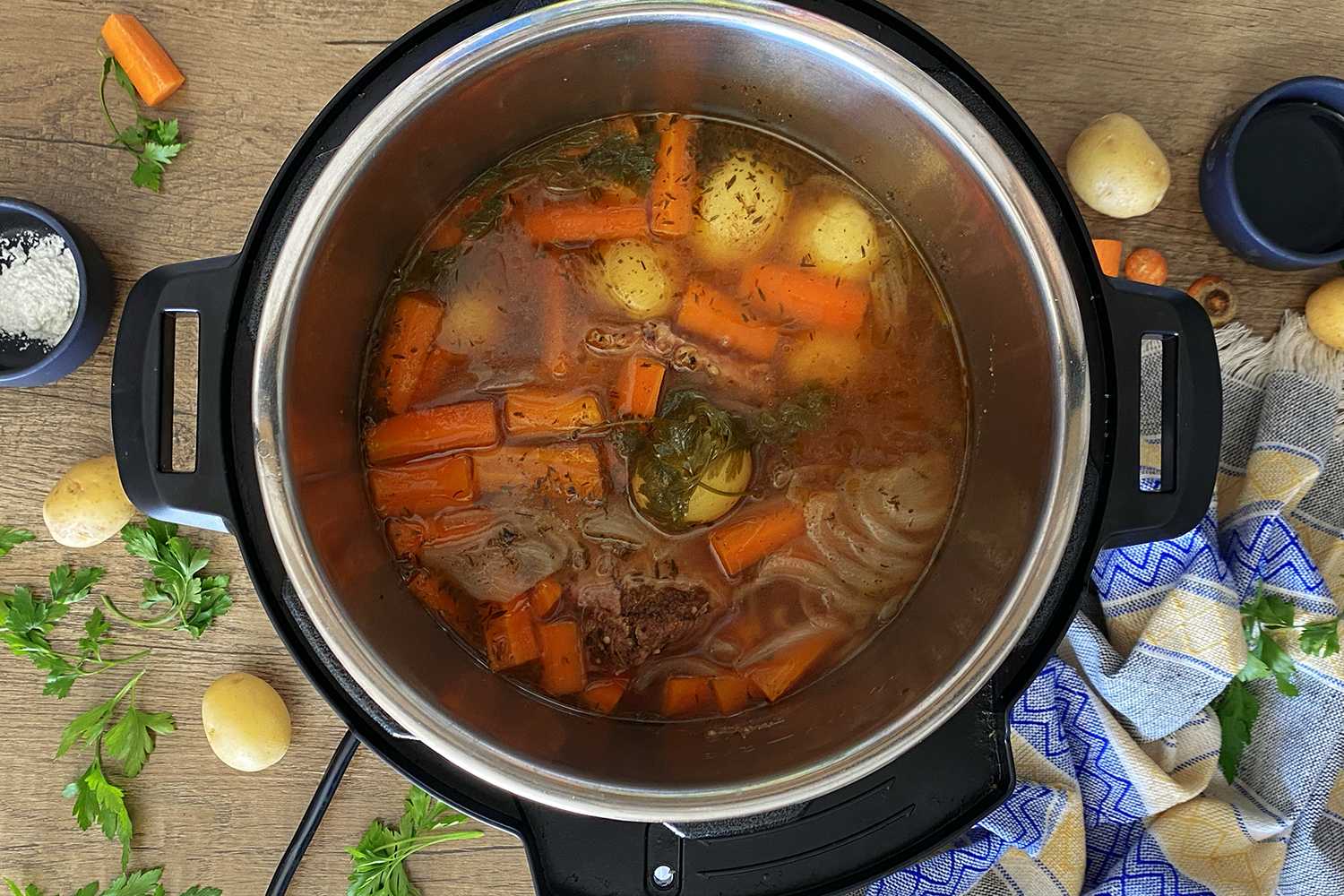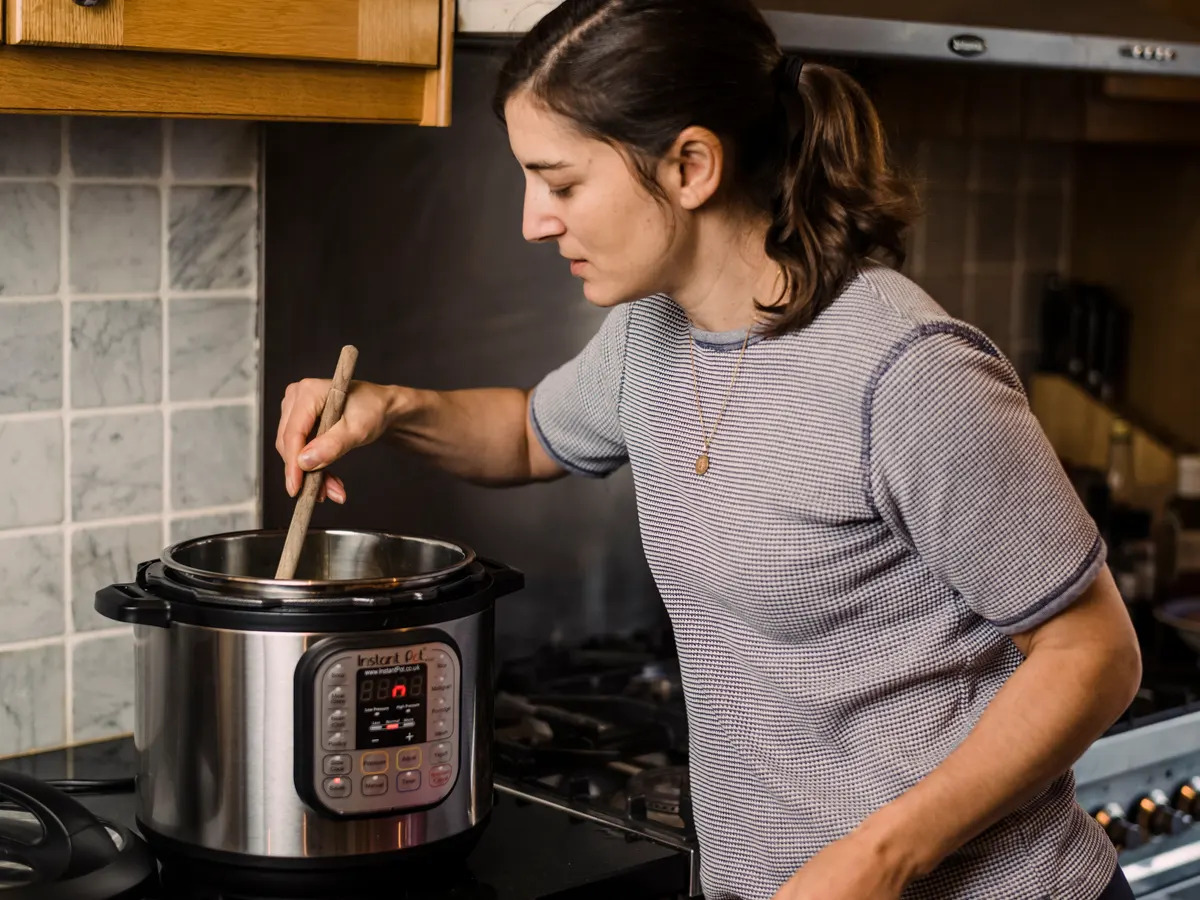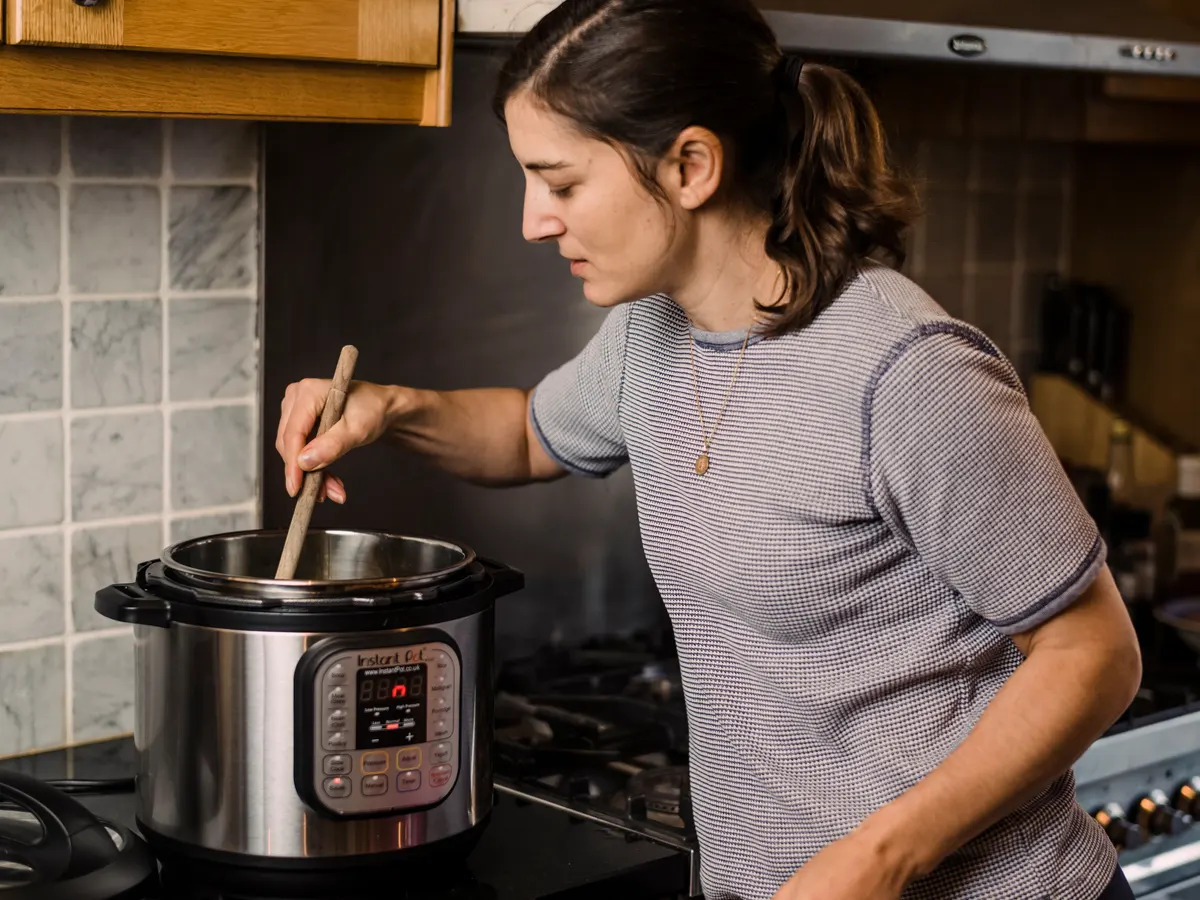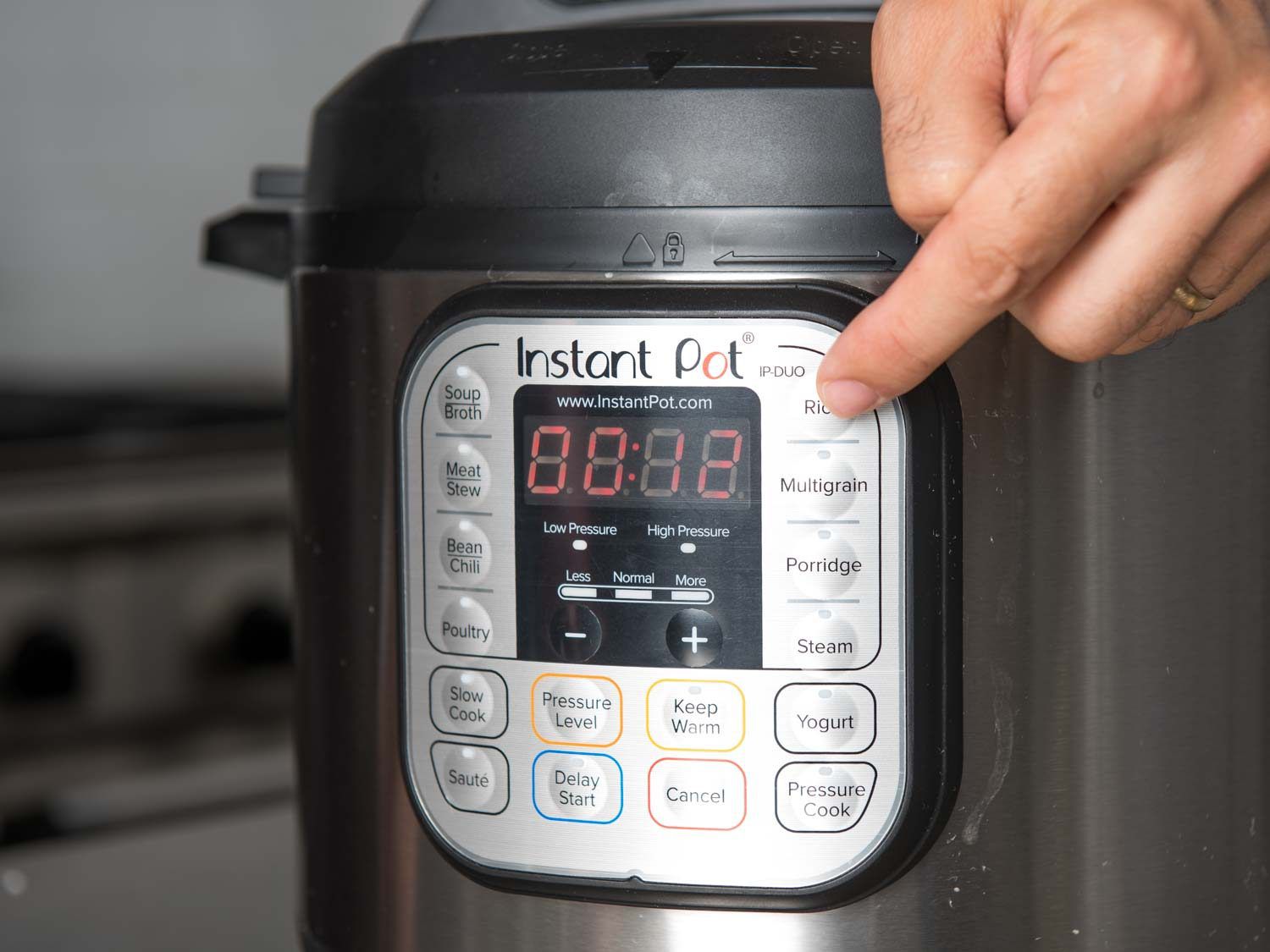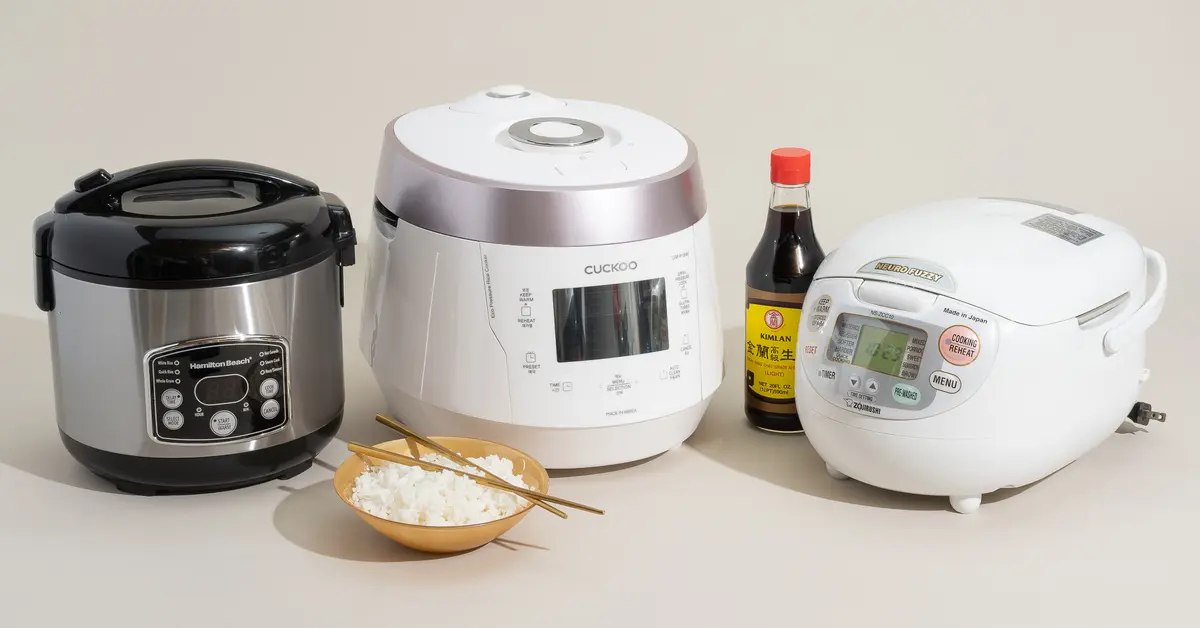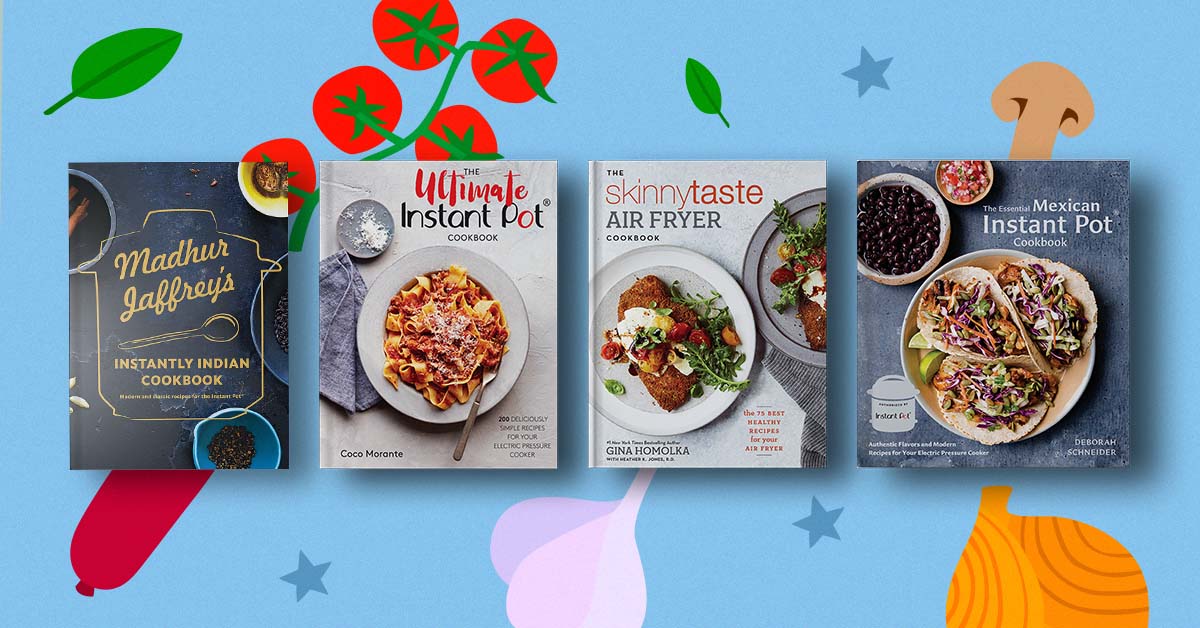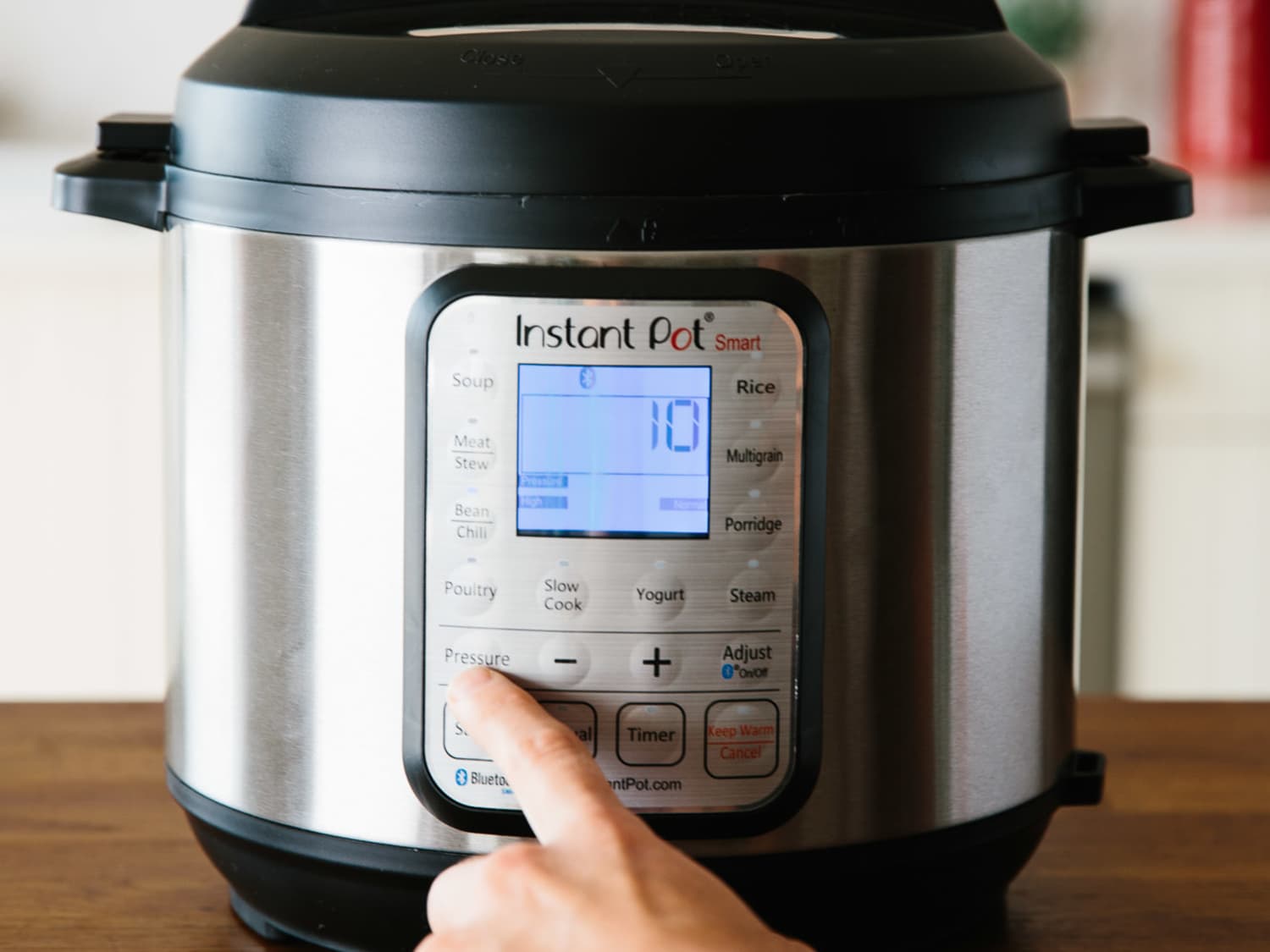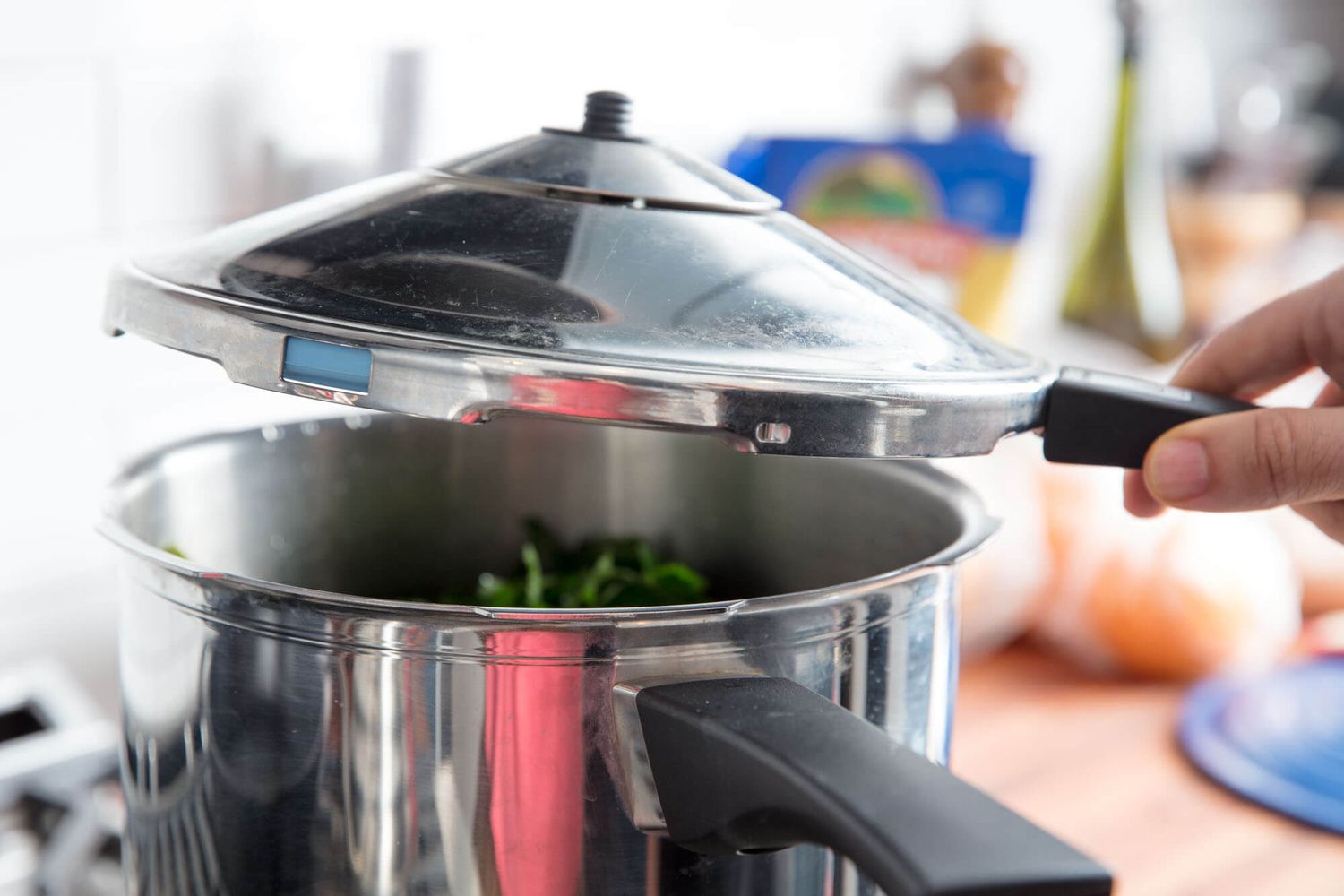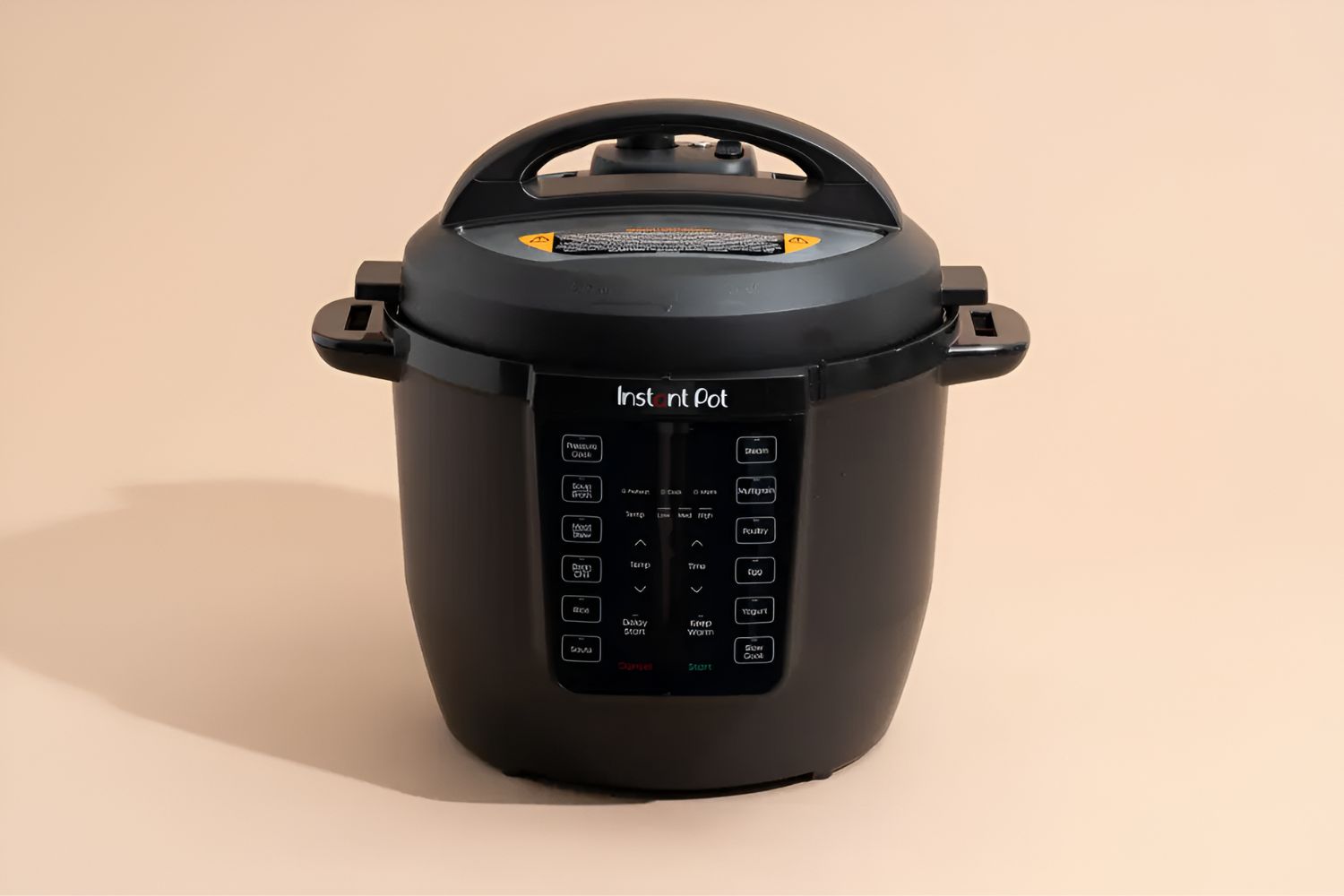Introduction
Are you a fan of slow cooker recipes but want to explore the convenience and speed of an electric pressure cooker? You’re not alone! With the growing popularity of electric pressure cookers, many home cooks are looking for ways to convert their favorite slow cooker recipes into pressure cooker-friendly versions.
Using an electric pressure cooker offers several benefits, including faster cooking times, energy efficiency, and the ability to cook a wide variety of dishes. By understanding the differences between a slow cooker and an electric pressure cooker, you can successfully adapt your slow cooker recipes to work in the pressure cooker.
In this article, we will delve into the process of converting slow cooker recipes to be used in an electric pressure cooker. We will discuss the adjustments needed for cooking times, liquid amounts, and ingredients, as well as offer some useful tips and tricks along the way.
Whether you’re new to the world of pressure cooking or have already mastered the basics, this guide will help you confidently convert your favorite slow cooker recipes to work perfectly in your electric pressure cooker.
Benefits of Using an Electric Pressure Cooker
Switching from a slow cooker to an electric pressure cooker comes with a multitude of benefits that can revolutionize your cooking experience. Here are some of the advantages of using an electric pressure cooker:
1. Time Efficiency
Unlike slow cookers that require several hours of cooking time, electric pressure cookers use high pressure to cook food quickly. The increased pressure and heat drastically reduce cooking time, allowing you to prepare meals in a fraction of the time it would take with traditional methods. Whether you’re cooking meat, vegetables, or grains, an electric pressure cooker can significantly cut down your cooking time and give you more free time for other activities.
2. Energy Efficiency
Electric pressure cookers are incredibly energy-efficient. The shorter cooking time means less power is consumed, resulting in lower energy bills. Additionally, the airtight seal of the pressure cooker prevents heat from escaping, further reducing energy waste. By utilizing an electric pressure cooker, you’re not only saving time but also helping the environment and your wallet.
3. Versatility
Electric pressure cookers are incredibly versatile appliances. They can be used for a wide range of cooking tasks, including sautéing, steaming, slow cooking, and even making yogurt. With multiple cooking functions and adjustable pressure levels, you have the flexibility to prepare a variety of dishes – from hearty stews and tender roasts to fluffy grains and homemade soups. The diversity of recipes you can cook in an electric pressure cooker is limited only by your imagination.
4. Retained Nutrients and Flavors
The sealed environment of an electric pressure cooker prevents nutrients from escaping during the cooking process. Unlike boiling or steaming, which can lead to nutrient loss, pressure cooking helps to preserve the nutritional value of the ingredients. Furthermore, the intense heat and pressure infuse flavors into the food, resulting in mouthwatering dishes that are packed with taste.
5. Easy Cleanup
Cleaning up after cooking can be a hassle, but an electric pressure cooker makes it a breeze. Most parts of the cooker, including the pot and lid, are dishwasher safe, saving you time and effort in the kitchen. The non-stick coating of the pot ensures that food doesn’t stick, making it easy to wipe clean by hand as well.
With these significant benefits, it’s no wonder that electric pressure cookers have gained such popularity among home cooks. Their time-saving, energy-efficient, versatile, and nutrient-preserving properties make them an essential tool in any kitchen.
Understanding the Differences Between a Slow Cooker and an Electric Pressure Cooker
Before converting your slow cooker recipes to an electric pressure cooker, it’s essential to understand the key differences between the two appliances. While both are designed to simplify cooking and create delicious meals, their cooking methods and time requirements vary significantly.
1. Cooking Method
A slow cooker relies on a low, steady heat to slowly cook food over several hours. It allows flavors to develop gradually and is ideal for recipes that require tenderizing tough cuts of meat or creating dishes with long simmering times. On the other hand, an electric pressure cooker uses high-pressure steam to cook food quickly. The trapped steam raises the boiling point of water, resulting in faster cooking times and tenderizing meats in a fraction of the time.
2. Time Requirements
One of the main distinctions between a slow cooker and an electric pressure cooker is the time required to cook meals. In a slow cooker, dishes can take anywhere from 4 to 8 hours or even longer, depending on the recipe. This extended cooking time is beneficial for those who prefer to “set it and forget it” or have meals ready by the end of the day. In contrast, an electric pressure cooker can prepare the same meal in a fraction of the time, typically under an hour. This makes it a perfect option for busy individuals or last-minute dinner preparations.
3. Control over Cooking Process
When using a slow cooker, the cooking process is relatively hands-off. Once the ingredients are added, the cooker maintains a constant temperature without the need for monitoring or adjustment. This makes slow cookers ideal for those who want to leave the kitchen and return to a fully cooked meal. With an electric pressure cooker, however, you have more control over the cooking process. You can adjust the pressure levels, cooking time, and even choose from various cooking modes to achieve the desired results. The ability to control and modify the cooking process offers a level of versatility that slow cookers may not provide.
4. Liquid Evaporation
Slow cookers have a tendency to retain moisture, resulting in a more liquid-based final dish. This is due to the low cooking temperature and prolonged cooking time. On the other hand, electric pressure cookers require a minimal amount of liquid due to the sealed environment and increased pressure. The steam generated in the pressure cooker stays trapped, reducing liquid evaporation and creating dishes with less liquid. Understanding this difference is crucial when converting slow cooker recipes, as adjustments to the amount of liquid may be necessary.
By recognizing the distinctions between a slow cooker and an electric pressure cooker, you can successfully adapt your recipes to suit the cooking method, time requirements, and other factors specific to your electric pressure cooker. This understanding will enable you to make the necessary modifications and create delicious meals with your new appliance.
Converting Cooking Times for Slow Cooker Recipes
When converting slow cooker recipes for an electric pressure cooker, it’s important to adjust the cooking times to match the faster cooking method of the pressure cooker. While slow cookers require several hours to cook a meal thoroughly, pressure cookers can achieve similar results in a fraction of the time. Here are some guidelines to help you convert cooking times for your favorite slow cooker recipes:
1. Cut the Cooking Time by Half
As a general rule of thumb, start by cutting the cooking time in the original recipe by half when using an electric pressure cooker. For example, if a slow cooker recipe states a cooking time of 8 hours, you can typically cook it in the pressure cooker for around 4 hours. However, keep in mind that the actual cooking time may still vary based on the specific recipe and ingredients.
2. Consider the Recipe’s Main Ingredients
Certain ingredients, such as meat, may require different cooking times and pressure levels. Tough cuts of meat that require long cooking times in a slow cooker can be cooked in a fraction of the time in an electric pressure cooker. For example, a beef stew recipe that usually takes 6 to 8 hours in a slow cooker may only require 30 to 45 minutes in an electric pressure cooker to achieve the same tenderness and flavors.
3. Take into Account Vegetable Cook Times
Vegetables generally have shorter cook times, and pressure cooking them for too long can lead to overcooking and texture loss. If the original recipe calls for adding vegetables at the beginning and cooking them for the entire duration, consider adding them halfway through the cooking time in the pressure cooker. This will help maintain their texture and prevent them from becoming mushy.
4. Use the “Natural Release” Method
For recipes that require longer cooking times, it’s important to factor in the natural release time when converting them to an electric pressure cooker. The natural release method allows the pressure to release gradually, which helps to further tenderize meats and develops flavors. Be sure to consider this additional time when planning your meal.
It’s essential to note that the above guidelines are just a starting point, and you may need to make further adjustments based on your specific electric pressure cooker and the recipe you’re converting. It’s always a good idea to consult the instruction manual for your pressure cooker for any specific recommendations or adjustments related to cooking times.
By understanding how to convert cooking times for your slow cooker recipes, you can confidently adapt them to be used in an electric pressure cooker, ensuring that your meals are cooked to perfection in a fraction of the time.
Adjusting Liquid Amounts for Electric Pressure Cooker Recipes
When converting slow cooker recipes to an electric pressure cooker, it’s important to make adjustments to the liquid amounts. The sealed environment and higher pressure of the pressure cooker require less liquid compared to slow cooking methods. Here are some tips to help you adjust the liquid amounts for your electric pressure cooker recipes:
1. Reduce the Liquid Quantity
In general, you’ll want to reduce the liquid amount by about 1/2 to 2/3 when converting a slow cooker recipe for an electric pressure cooker. The trapped steam in the pressure cooker creates a moist cooking environment, minimizing evaporation and resulting in rich, flavorful dishes. Start by reducing the liquid to about half of what the slow cooker recipe calls for and adjust from there if necessary.
2. Use Thicker Sauces and Broths
In a slow cooker, liquid is essential to prevent the food from drying out over the long cooking period. However, in an electric pressure cooker, you can use thicker sauces and broths to provide moisture and flavor to the dish. This can enhance the overall taste and texture of your recipe while still providing enough liquid for the pressure cooker to function effectively.
3. Take Advantage of Natural Juices
When adapting meat-based slow cooker recipes, take into account that the pressure cooker will extract and retain more of the natural juices. This means you may need to reduce the added liquid further, as the meat itself will release more moisture during pressure cooking. This can help maintain the desired consistency of the final dish without diluting the flavors.
4. Adjust for Recipe Specifics
Consider the specific ingredients and their moisture content when adjusting liquid amounts. Ingredients like canned tomatoes, vegetables, or certain cuts of meat may release additional liquid during cooking. If your recipe includes such ingredients, you may need to decrease the added liquid accordingly to prevent the recipe from becoming too watery.
Remember, it’s important to find the right balance of liquid in your electric pressure cooker recipes. Too little liquid can result in a burnt or undercooked dish, while too much can dilute flavors. It may require some trial and error to determine the perfect amount for your specific recipe and personal preference.
By adjusting the liquid amounts in your slow cooker recipes to suit your electric pressure cooker, you can ensure that your dishes are cooked to perfection with the right balance of flavors and moisture.
Modifying Ingredients and Seasonings for Electric Pressure Cooker Recipes
When converting slow cooker recipes to be used in an electric pressure cooker, it’s important to modify the ingredients and seasonings to ensure optimal results. The high-pressure environment and shorter cooking times of the pressure cooker require some adjustments to maximize flavor and texture. Here are some tips to help you modify ingredients and seasonings for your electric pressure cooker recipes:
1. Consider Ingredient Size
Because the cooking time is significantly reduced in an electric pressure cooker, ingredients that typically take a long time to cook, such as large chunks of meat, may not have enough time to become tender. It’s important to adjust the size of the ingredients accordingly. For example, cut large pieces of meat into smaller, more manageable pieces to ensure even cooking and tenderness.
2. Optimize Seasoning Levels
Because the pressure cooker intensifies flavors, it’s crucial to adjust the seasoning levels in your recipes. Increase the amount of herbs, spices, and seasonings slightly to account for the shorter cooking time. Keep in mind that flavors can concentrate in a pressure cooker, so proceed with caution and taste-test as you go to avoid over-seasoning. It’s always easier to add more seasoning later than to fix an overly seasoned dish.
3. Be Mindful of Delicate Ingredients
Delicate ingredients such as herbs, leafy greens, and dairy products may not fare well under high pressure for extended periods. To preserve their flavors and textures, consider adding these ingredients towards the end of the cooking process or using the natural release method to prevent overcooking. This will help ensure that they retain their freshness and contribute to the overall appeal of the dish.
4. Adjust Cooking Liquids
Since the pressure cooker requires less liquid, pay attention to the thinness or thickness of the cooking liquids. Thicken any thin sauces or liquids before starting the cooking process to prevent the dish from becoming too watery. This can be done by creating a slurry with cornstarch or flour to thicken the sauce or by reducing the cooking liquid on the stovetop before adding it to the pressure cooker.
5. Follow Recommended Cooking Times for Ingredients
Each ingredient has its own optimal cooking time, and it’s important to follow guidelines specific to your electric pressure cooker. The manufacturer’s instructions and recipe books may provide recommended cooking times for various ingredients. Use these as a starting point and adjust as needed based on the specific recipe and your desired results. Overcooking or undercooking certain ingredients can affect the texture and taste of the final dish.
By modifying the ingredients and seasonings in your slow cooker recipes to suit the electric pressure cooker, you can create flavorful and well-cooked dishes that make the most of this efficient cooking method.
Tips and Tricks for Converting Slow Cooker Recipes to an Electric Pressure Cooker
Converting slow cooker recipes to be used in an electric pressure cooker can be a rewarding culinary adventure. Here are some useful tips and tricks to help you navigate the conversion process and ensure successful results:
1. Familiarize Yourself with Your Electric Pressure Cooker
Take the time to read the instruction manual and understand the specific features and functions of your electric pressure cooker. Each brand and model may have slight variations, so it’s important to get to know your appliance well. Understanding the various cooking modes, pressure release methods, and recommended settings will give you confidence in converting your slow cooker recipes.
2. Start with Tested Recipes
Begin by converting tried and tested slow cooker recipes that have been successfully adapted for the electric pressure cooker. This can provide a helpful baseline for understanding cooking times, liquid amounts, and ingredient adjustments. Many online communities and recipe websites offer collections of pressure cooker recipes that you can explore and experiment with.
3. Allow for Additional Pressure Release Time
When converting slow cooker recipes to an electric pressure cooker, factor in the extra time needed for the pressure cooker to come to pressure and release pressure naturally. This extra time ensures the flavors meld together, and the food reaches the desired tenderness. Taking this into account will help you plan your cooking schedule accordingly.
4. Don’t Overcrowd the Pressure Cooker
Avoid overfilling the electric pressure cooker to prevent uneven cooking and potential blockages. Follow the maximum fill line guidelines provided in the instruction manual. If needed, divide a recipe into multiple batches to ensure that the pressure cooker has enough space for proper cooking and pressure release.
5. Experiment with Flavors and Seasonings
While converting slow cooker recipes, feel free to experiment with different flavors and seasonings. Pressure cooking can intensify flavors, so be mindful of how much seasoning you add. Consider incorporating fresh herbs, spices, and aromatics to enhance the overall taste and aroma of the dish.
6. Utilize the Sauté Function for Pre-cooking Steps
Many electric pressure cookers offer a sauté function, which allows you to brown or pre-cook ingredients before pressure cooking. This step can add depth of flavor and texture to your dishes. Utilize this feature when necessary, such as when browning meat or onions, before moving on to the pressure cooking stage.
7. Keep a Recipe Journal
As you convert slow cooker recipes and make adjustments, keep a recipe journal to document the changes you made and the results obtained. This will serve as a valuable resource for future reference and refinement. Note any modifications you made to cooking times, ingredient quantities, and seasonings to tailor the recipe to your taste.
With these tips and tricks in mind, you’ll be well-equipped to convert your favorite slow cooker recipes into delicious dishes cooked in an electric pressure cooker. Embrace the versatility and efficiency of your pressure cooker, and enjoy exploring new culinary possibilities.
Conclusion
Converting slow cooker recipes to be used in an electric pressure cooker opens up a whole new world of convenience and culinary possibilities. By understanding the differences between these two appliances and making necessary adjustments to cooking times, liquid amounts, ingredients, and seasonings, you can create delicious meals in a fraction of the time.
Using an electric pressure cooker offers numerous benefits, including time efficiency, energy savings, versatility, retained nutrients, and easy cleanup. These advantages make it an appealing choice for home cooks looking to streamline their cooking process without sacrificing flavor and quality.
When converting slow cooker recipes, it’s important to remember the guidelines for adjusting cooking times, cutting liquid amounts, modifying ingredients and seasonings, and using appropriate cooking methods. These adjustments ensure that your recipes are optimized for the electric pressure cooker’s high-pressure environment and shorter cooking times.
Additionally, incorporating tips and tricks such as familiarizing yourself with your electric pressure cooker, starting with tested recipes, allowing for extra pressure release time, avoiding overcrowding the cooker, experimenting with flavors and seasonings, utilizing the sauté function, and keeping a recipe journal will enhance your conversion process and help you fine-tune your culinary creations.
By harnessing the power and efficiency of an electric pressure cooker, you can enjoy the convenience of preparing delicious meals in a fraction of the time, all while preserving flavors, retaining nutrients, and impressing your family and friends with your culinary skills.
So go ahead and uncover the magic of converting your slow cooker recipes to an electric pressure cooker. Embrace the versatility, experience the time-saving benefits, and explore new flavors and textures in your kitchen. With a little creativity and know-how, you’ll be whipping up a wide range of delectable dishes in no time!







